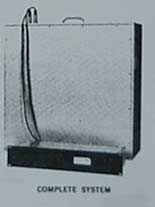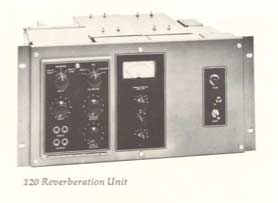By Will Shanks
 |
|
UREI Cooper Time Cube
|
920-16 Cooper Time Cube
Conceived and designed by Dr. Duane Cooper and Bill Putnam in 1971, the 920-16 Cooper Time Cube is an analog delay. More commonly achieved by tape machines at the time, the function of the Cooper Time Cube is simply to delay audio signal within two discrete channels and two fixed delays times, one of 16 ms and the other 14 ms. The two lines can also be patched in series for a total of 30 ms. The Cooper Time Cube is often used to delay the reverb return of an EMT plate, or used as an insert on individual tracks. Many are still in use to this day.
“Looking for a good deal on a vintage 1176 or maybe a vintage LA-3A? Look no further than the BL-40-it's both!”
 |
|
UREI Cooper Time Cube Delay housing
|
The controls of the unit are a 2RU rackmount unit that allows access to the provided UREI 1109 line amplifiers, and thus to the independent delay line input gains. A meter is provided to view the delay output, plus four TRS jacks for front-panel signal access and routing (this was common on certain UA and UREI products). The rear of the unit provides permanent barrier strip connections. Approximately 1,000 were sold. This is a favorite of recording engineer Richard Dodd, who says, "The Cooper Time Cube is an analog delay relative to the length of the pipe, 16 and 14 ms. Unlike digital delays at those settings, the sound is very useable."
120 Reverberation Unit
Not much is known today about this device; it is unlikely that it even made it to market, but the 120 Reverberation unit was UA's one and only exploration into artificial reverb, some time in the mid-sixties. Bill Putnam apparently had a passion for these types of devices. I found sales sheets and manuals for many other reverberation devices in the Putnam archives: some well-known like those made by EMT, and some I never
 |
|
Universal Audio 120 Reverberation unit
|
The 120 Reverberation is described as able to produce colorless, high-density reverberation over a wide pass band. It did not use resonating devices such as plates or springs, or even tape loops. The 120 Reverberator apparently worked on the principal of an electrostatically charged reservoir of oil! If anyone has more information on this unit, please email me.
BL-40 Modulimiter
Looking for a good deal on a vintage 1176 or maybe a vintage LA-3A? Look no further than the BL-40-it's both! Designed for AM-Radio broadcast use, the BL-40's original function was to "...eliminate unwanted overmodulation in radio transmission without clipping. The BL-40 also features a 'phase optimizer,' which automatically maintains the most favorable signal polarity reversing phase whenever negative peaks exceed positive peaks..."
The BL-40 uses optical compression on the first stage of gain reduction by way of the tried-and-true T4, the same one found in the LA-2A and LA-3A. This functions as the RMS detector. The next gain-reduction stage is the classic FET gain reduction of the 1176 and functions as the peak detector. I think the coolest thing about the BL-40 is that you get metering for RMS, Peak and Output levels. The most annoying thing about it is that all the controls require a mini-screwdriver hidden behind a security panel. Remember, this is a broadcast compressor-don't touch those dials!
 |
|
UREI BL-40 Modulimiter
|
900 Series Digital Metronomes
Never underestimate the power of a good click track. Designed under Bill's mission to "solve problems in the studio," the 900 Series Digital Metronome can still be found in studios around the world. I love the padlock-style BPM controls! The UREI metronome was recently immortalized in Digital Performer's latest software release: "A click can be a very personal thing. Some of us prefer a more musical click sound, such as a side stick or closed hi-hat. Others require the precise snap of the venerable UREI Metronome..."
 |
|
Universal Audio 962 Digital Metronome
|
 |
|
Universal Audio 964 Digital Metronome
|